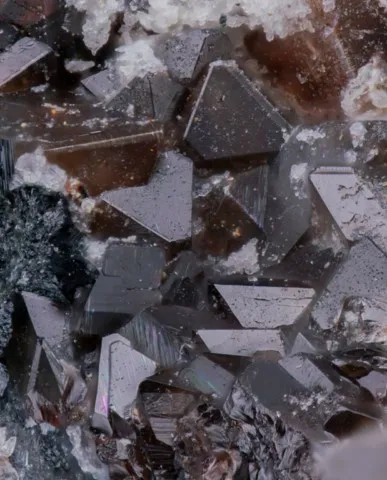REDDINGITE
Class : Phosphates, arsenates, vanadates
Subclass : Hydrated phosphates
Crystal system : Orthorhombic
Chemistry : Mn3(PO4)2 3H2O
Rarity : Rare to very rare
Reddingite is a secondary phosphate of granitic pegmatites, in which it forms by alteration of primary phosphates, usually triphylite or lithiophilite. Its name comes from its place of discovery : Redding in Connecticut (USA). Reddingite is usually massive, rarely in small pseudo-octahedral crystals, sometimes tabular, usually grouped in parallel aggregates. It is colorless or weakly tinted pale pink or pale yellow-brown; it becomes orange-brown by oxidation.
Main photo : Reddingite from Hagendorf pegmatites, Germany © Christophe Boutry
Reddingite in the World
Twinning
No known twinning for this mineral species.
Fakes and treatments
No fakes listed for this mineral species.
Hardness : 3.5
Density : 3 to 3.2
Fracture : Irregular
Streak : White
TP : Translucent to transparent
RI : 1.643 to 1.685
Birefringence : 0.031
Optical character : Biaxial +
Pleochroism : Visible
Fluorescence : None
Solubility : Acids
Magnetism : NoneRadioactivity : None

